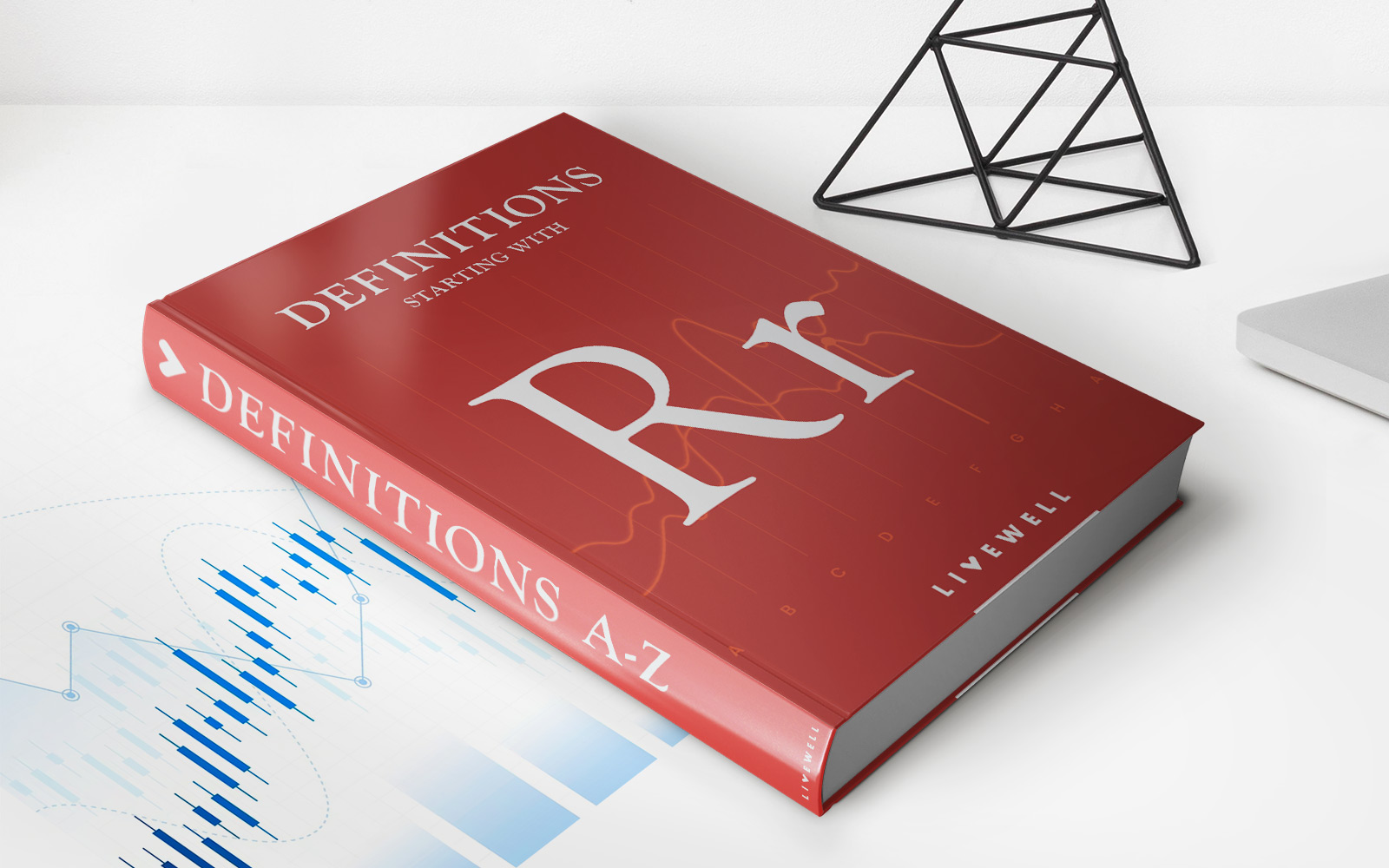

Finance
How To Calculate GDP
Published: October 29, 2023
Learn how to calculate GDP and understand its importance in finance. Explore the methods used, key indicators, and contributions to economic growth.
(Many of the links in this article redirect to a specific reviewed product. Your purchase of these products through affiliate links helps to generate commission for LiveWell, at no extra cost. Learn more)
Table of Contents
Introduction
When it comes to measuring the economic health of a country, Gross Domestic Product (GDP) plays a crucial role. GDP is an important indicator that provides insights into the overall economic performance of a nation. It measures the total value of all goods and services produced within a country’s borders during a specific time period.
GDP serves as a barometer for economic growth and is widely used by policymakers, investors, and analysts to assess a country’s economic strength and to make informed decisions. Understanding how GDP is calculated and what factors contribute to its growth is essential for anyone seeking to gain a deeper insight into the financial landscape.
In this article, we will delve into the intricacies of GDP calculation, exploring the components that make up this crucial economic indicator and the methodologies used to determine its value. By examining the strengths and limitations of GDP, we can better comprehend the broader implications it has on a nation’s economic well-being.
Whether you’re an economics enthusiast, a business owner, or simply someone who wants to grasp the fundamentals of GDP, this article will provide you with a comprehensive understanding of how GDP is calculated and its significance in the financial world.
Understanding GDP
Gross Domestic Product (GDP) is a widely used economic indicator that measures the total value of all goods and services produced within a country’s borders over a specific time period. It provides a snapshot of a nation’s economic activity and is a key measure of economic growth and development.
GDP reflects the size and strength of an economy by accounting for both the consumption and production levels within a country. It serves as a benchmark for comparing the economic performance of different nations and can help identify trends and patterns in economic activity.
It’s important to note that GDP captures only the value of goods and services that are produced within a country’s borders, regardless of whether the production is carried out by domestic or foreign entities. This distinction is crucial as it ensures that the GDP measurement focuses on the economic activity that directly contributes to the country’s overall output.
Additionally, GDP measures the final value of goods and services, excluding intermediate goods or inputs used in the production process. This approach avoids the issue of double-counting and provides a more accurate representation of the overall economic output.
GDP is typically measured over specific time periods, usually a year or a quarter. Tracking GDP growth rates allows for comparisons over time, enabling policymakers and analysts to assess the direction and pace of economic changes.
By understanding the concepts and principles behind GDP, we can gain valuable insights into the overall economic health of a nation and make informed decisions to ensure sustainable economic growth.
Components of GDP
Gross Domestic Product (GDP) is composed of several components that reflect different aspects of economic activity within a country. These components provide a comprehensive view of the various sectors and their contributions to the overall GDP. The main components of GDP include:
- Consumption (C): This component represents the expenditures made by households on goods and services. It includes purchases of durable goods (such as cars and appliances), nondurable goods (such as food and clothing), and services (such as healthcare and education). Consumption is typically the largest component of GDP and is a key driver of economic growth.
- Investment (I): Investment refers to the spending by businesses on capital goods, such as machinery, equipment, and buildings, in order to expand or maintain their production capacity. It also includes investment in residential structures, such as houses and apartments. Investment is an important indicator of business confidence and future economic growth.
- Government Spending (G): This component represents the expenditures made by the government at the federal, state, and local levels. It includes spending on public goods and services, such as defense, infrastructure, education, and healthcare. Government spending can be a significant driver of economic activity, particularly during times of economic downturn when increased public investment is used to stimulate the economy.
- Net Exports (X – M): Net exports represent the difference between a country’s exports (X) and imports (M). Exports refer to the goods and services produced domestically and sold to foreign countries, while imports represent the goods and services purchased from abroad. A positive value indicates a trade surplus (exports exceed imports), while a negative value indicates a trade deficit (imports exceed exports). Net exports reflect the international competitiveness and trade balance of a country.
By considering these components, GDP captures the different facets of economic activity, including household spending, business investment, government expenditure, and international trade. Each component contributes to the overall GDP and provides insights into the overall health and performance of the economy.
Calculation of GDP
Gross Domestic Product (GDP) can be calculated using two primary approaches: the expenditure approach and the income approach. Both methods aim to measure the total value of economic activity within a country, but they differ in how they categorize and calculate the components of GDP.
Expenditure Approach:
The expenditure approach calculates GDP by summing up the expenditures made in various sectors of the economy. It considers the following components:
- Consumption (C): This component includes household spending on goods and services.
- Investment (I): It comprises business spending on capital goods and residential structures.
- Government Spending (G): This component represents the expenditures made by the government.
- Net Exports (X – M): It accounts for the value of exports minus imports.
GDP can be calculated using the formula:
GDP = C + I + G + (X – M)
By summing up the expenditures in these categories, we obtain the total value of goods and services produced within the country’s borders.
Income Approach:
The income approach measures GDP by summing up the incomes earned by individuals and businesses in the economy. It considers the following components:
- Wages and Salaries: This includes the compensation earned by employees.
- Profits: It includes the income earned by businesses.
- Interest: It represents the earnings from lending or borrowing.
- Rent: It accounts for the income generated from property or land.
- Other Income: It includes other forms of income, such as dividends and transfer payments.
GDP can be calculated using the formula:
GDP = Wages and Salaries + Profits + Interest + Rent + Other Income
By summing up the incomes earned by various individuals and entities, we obtain the total value of economic activity within the country.
Both approaches yield the same result for GDP calculation, as they measure different aspects of the economy. The choice of approach depends on the availability of data and the specific focus of the analysis. However, it’s worth noting that the expenditure approach is more commonly used as it provides a more comprehensive view of economic activity.
Using the Expenditure Approach
The expenditure approach is one of the methods used to calculate Gross Domestic Product (GDP). It focuses on the total expenditures made in the economy and considers the various components that contribute to GDP. By analyzing consumer spending, business investment, government expenditure, and international trade, the expenditure approach provides insights into the overall economic activity within a country.
Consumer Spending:
Consumer spending, also known as consumption (C), represents the expenditures made by households on goods and services. This includes purchases of durable goods like cars and appliances, nondurable goods like food and clothing, and services like healthcare and education. Consumer spending is a crucial component of GDP, as it accounts for a significant portion of overall economic activity.
Business Investment:
Business investment (I) refers to the spending by businesses on capital goods, such as machinery, equipment, and buildings, to expand or maintain their production capacity. It also includes investment in residential structures like houses and apartments. Business investment is an indicator of the confidence and optimism in the business sector, and it plays a crucial role in driving economic growth.
Government Expenditure:
Government expenditure (G) includes the spending by the government at the federal, state, and local levels. It encompasses the expenditures on public goods and services, such as defense, infrastructure, education, and healthcare. Government expenditure can have a significant impact on the overall economy, as increased spending during times of economic slowdown can help stimulate economic activity.
Net Exports:
Net exports (X – M) account for the difference between a country’s exports (X) and imports (M). Exports refer to the goods and services produced domestically and sold to foreign countries, while imports represent the goods and services purchased from abroad. A positive value indicates a trade surplus, where exports exceed imports, while a negative value indicates a trade deficit, where imports exceed exports. Net exports reflect a country’s international competitiveness and trade balance.
By summing up these components of expenditure, we can calculate GDP using the formula:
GDP = C + I + G + (X – M)
This approach provides a comprehensive view of the economic activity within a country, capturing the spending patterns of individuals, businesses, and the government. By understanding the contributions of these components, policymakers and analysts can gain insights into the overall economic performance and make informed decisions to ensure sustainable economic growth.
Using the Income Approach
The income approach is another method used to calculate Gross Domestic Product (GDP). It focuses on the incomes earned by individuals and businesses in the economy, providing a different perspective on the overall economic activity within a country. By analyzing wages, profits, interest, rent, and other forms of income, the income approach offers insights into the value generated by different sectors of the economy.
Wages and Salaries:
Wages and salaries refer to the compensation earned by individuals in exchange for their labor. This includes the income earned through employment, such as salaries, wages, bonuses, and commissions. The wages and salaries component of GDP captures the value generated by the labor force and reflects the income distribution within the economy.
Profits:
Profits represent the income earned by businesses. They include both operating profits and non-operating profits. Operating profits are generated through the production and sale of goods and services, while non-operating profits come from investments, dividends, and other sources. Profits reflect the performance and profitability of businesses, representing an important component of the income approach to GDP measurement.
Interest:
Interest refers to the income earned from lending or borrowing. It includes the interest earned on loans, bonds, savings accounts, and other financial instruments. Interest income represents the compensation for the use of capital and plays a crucial role in the overall income earned by individuals and the financial sector.
Rent:
Rent represents the income generated from the use of property or land. It includes rental payments for residential and commercial properties, as well as land lease income. Rent serves as a measure of the income earned from real estate holdings and reflects the value of the physical assets in the economy.
Other Income:
The “other income” category encompasses various forms of income that do not fall into the above-mentioned components. This can include dividends received from investments, transfer payments from the government, royalties, and other miscellaneous sources of income. Other income captures additional streams of earnings in the economy.
By summing up these income components, we can calculate GDP using the formula:
GDP = Wages and Salaries + Profits + Interest + Rent + Other Income
The income approach provides a comprehensive view of economic activity by examining the incomes earned by individuals and businesses. It reflects the value generated within different sectors of the economy and plays a crucial role in understanding the distribution and utilization of income. By utilizing the income approach, economists and policymakers can gain insights into the overall economic performance and make informed decisions to promote sustainable economic growth.
Limitations of GDP Calculation
While Gross Domestic Product (GDP) is widely used as a measure of economic activity and a gauge of a country’s economic health, it has several limitations that should be considered when interpreting its significance. These limitations highlight the need for supplementary indicators and a more comprehensive understanding of the economy. The main limitations of GDP calculation include:
1. Excludes Non-Market Activities: GDP only includes goods and services that are exchanged in the market. It does not take into account non-market activities such as volunteer work, household production, and the informal economy, which can be substantial in some countries.
2. Ignores Quality of Life Factors: GDP focuses solely on economic output and does not account for factors that contribute to overall well-being, such as income distribution, environmental sustainability, healthcare access, education levels, and social indicators. It fails to provide a comprehensive picture of a country’s standard of living.
3. Does Not Capture Illegal Activities: GDP calculations do not include illegal activities, such as black market transactions and underground economies. This omission can lead to an underestimation of a country’s economic activity and may distort the actual economic picture.
4. Ignores Income Distribution: GDP does not consider income distribution among the population. It is possible for a country to have a high GDP per capita, indicating overall economic wealth, while significant income disparities persist, leading to social and economic inequalities.
5. Neglects Intangible Factors: GDP primarily measures the production of tangible goods and services. It does not capture the value of intangible factors such as intellectual property, innovation, research and development, and the contributions of the knowledge-based economy.
6. Neglects Externalities and Social Costs: GDP does not account for the environmental impact and social costs associated with economic growth. It fails to consider environmental degradation, pollution, depletion of natural resources, and other negative externalities that may arise from economic activities.
7. Does Not Measure Informal Economy: The informal economy, consisting of unregistered and unreported economic activities, is often not captured in GDP calculations. This can result in an underestimation of economic activity and mask the true economic dynamics in certain regions or sectors.
It is important to recognize these limitations and complement GDP with other measures and indicators to gain a comprehensive understanding of the economy. Supplementary metrics, such as the Human Development Index (HDI), the Genuine Progress Indicator (GPI), and the Sustainable Development Goals (SDGs), provide a more holistic approach to gauge a nation’s well-being, sustainability, and progress.
Importance of GDP Measurement
Gross Domestic Product (GDP) measurement plays a critical role in the assessment and understanding of a country’s economic performance. It serves as a key indicator for various stakeholders, including policymakers, investors, analysts, and researchers. The importance of GDP measurement can be summarized as follows:
1. Economic Performance Assessment: GDP provides a quantitative measure of a nation’s economic performance and growth over time. It allows policymakers and analysts to evaluate the effectiveness of fiscal and monetary policies, identify economic cycles, and assess the impact of various economic factors on the overall economy.
2. International Comparison: GDP enables comparisons of economic performance among different countries. By standardizing the measurement methodology, GDP allows analysts to determine the relative strength and competitiveness of economies, facilitating benchmarking, trade negotiations, and international cooperation.
3. Policy Formulation and Implementation: GDP serves as a guide for policymakers in formulating and implementing economic policies. By interpreting GDP growth rates and analyzing its components, governments can identify areas of strength or weakness in the economy, prioritize policy interventions, and set targets to achieve sustainable economic growth and development.
4. Business Planning and Investment Decisions: GDP measurement provides insights to businesses and investors for strategic planning and investment decisions. By analyzing GDP trends, sectors with high growth potential can be identified, helping businesses align their strategies and investments accordingly.
5. Employment and Labor Market Analysis: GDP helps in assessing and understanding employment trends and labor market conditions. By examining the relationship between GDP growth and employment levels, policymakers and analysts can gauge the potential for job creation, unemployment rates, and the overall health of the labor market.
6. Resource Allocation: GDP measurement guides the allocation of resources within an economy. By identifying sectors and industries that contribute the most to GDP, policymakers and businesses can allocate resources efficiently and prioritize areas of investment, fostering economic diversification and long-term growth.
7. Planning for Social Welfare and Public Services: GDP measurement provides a basis for planning and allocating resources for social welfare programs and public services. It helps governments understand the capacity to invest in healthcare, education, infrastructure, and other essential public services, ultimately improving the overall well-being of the population.
It is essential to acknowledge that GDP alone does not provide a complete picture of societal progress and well-being. Complementing GDP with other indicators, such as income distribution, environmental sustainability, and social development metrics, ensures a more comprehensive measurement framework that aligns with sustainable and inclusive growth objectives.
Conclusion
Gross Domestic Product (GDP) serves as a critical measure of economic activity and growth within a country. It provides insights into the overall health and performance of an economy, guiding policymaking, investment decisions, and resource allocation. However, it is crucial to recognize the limitations of GDP measurement and consider supplementary indicators to obtain a more comprehensive understanding of a nation’s well-being and progress.
By comprehending the components of GDP and the methodologies used for its calculation, individuals can gain valuable insights into the economic landscape. The expenditure approach and income approach provide different perspectives on economic activity, emphasizing consumer spending, business investment, government expenditure, and international trade or income earned by individuals and businesses.
While GDP plays a vital role in economic assessment, it is essential to complement it with other indicators and metrics that capture factors such as income distribution, environmental sustainability, and social well-being. Metrics like the Human Development Index (HDI), the Genuine Progress Indicator (GPI), and the Sustainable Development Goals (SDGs) provide a more holistic view of progress and inform policy decisions that aim to achieve sustainable and inclusive economic growth.
As we navigate the complexities of the global economy, understanding and evaluating GDP in conjunction with other indicators will allow us to make more informed decisions to promote economic prosperity, social welfare, and environmental sustainability.














